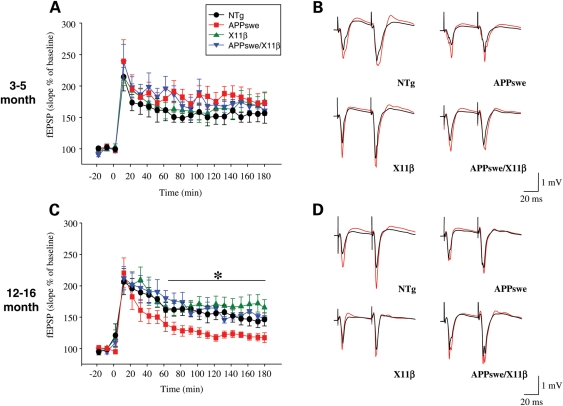Figure 5.
X11β improves LTP in 12–16 months APPswe mice. LTP in 3–5 months (A) and 12–16 months (C) NTg, APPswe, X11β and APPswe/X11β mice are shown. fEPSP slopes are expressed as the % of the pre-tetanus baseline. Representative examples of stimulus responses both before (black) and after (red) tetanus are also shown for both age groups (B; 3–5 months, D; 12–16 months). (A) No significant differences in fEPSPs between genotypes were detected during either induction-phase (10–70 min), maintenance-phase (70–130 min) or late-phase (130–180 min) of LTP in 3–5 months mice (one-way ANOVA; n = 7–9). (C) No significant differences in fEPSPs between genotypes were detected in the induction phase in 12–16 months mice. Likewise, no differences in fEPSPs were detected between NTg, X11β and APPswe/X11β in the maintenance and late phases of LTP. In contrast LTP was significantly less well maintained in the maintenance- and late-phases in APPswe mice compared with all other genotypes (one-way ANOVA with LSD post hoc test P < 0.05; n = 6–8). * Indicate significant differences. Error bars are ± SEM.

